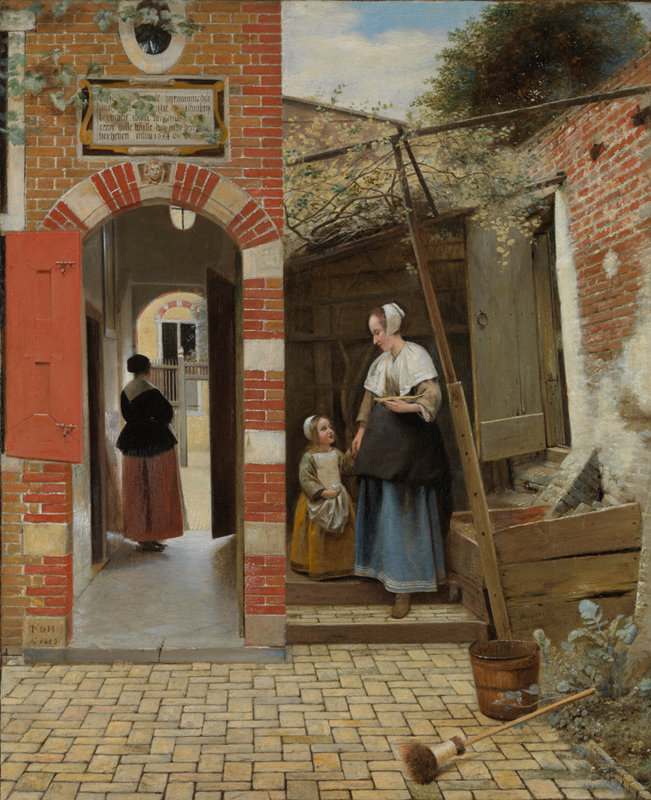The Courtyard of a House in Delft Pieter de Hooch 1658
I love this painting of the most tranquil domestic scene set in a courtyard in Delft. Dutch painters in the 17th century were masters of such tranquil domestic scenes.
Pieter de Hooch here brilliantly captures the texture of brick, paving stone, rickety wood and weathered paint; all rendered in stunning detail. Add to that the tenderness of the mother holding her daughter’s hand as they go about their chores. The mother has fetched something in a dish to take back to her kitchen, while the girl has something in her apron. There is beautiful communication between them!
Other details catch my eye: the broom, worn out with house-proud sweeping; the water glistening on the rim of the bucket; the gloss on the red bolts of the window shutter; the light filtering through the rambling overhead shrub.
These compositions are all the more remarkable for their context. The Eighty Years War against Spain had only just ended in 1648, ten years before this was painted. It had been the most brutal war, fired by politics and religion, with Philip II of Spain attempting to maintain his Catholic grip in the face of the Calvinism of a new Dutch Republic. There had been grotesque sackings and pillaging of cities such as Antwerp and Maastricht. Tens of thousands of violent deaths. No wonder paintings such as these celebrate the peace and middle-class values of the new Republic!
But while the relationship of the mother and daughter draw our attention, they are not the heart and soul of the painting. There is a woman in the shade of the passageway, contemplating the courtyard beyond. That’s another thing the Dutch loved to do: lead our eye through doorways and windows to scenes beyond!
Having noticed her we are drawn to the inscription over the archway which translates as, ‘This is in Saint Jerome’s Vale. If you wish to withdraw to patience and meekness. For we must first descend if we wish to be raised.’ The space beyond is a spiritual place; brighter and neater than our immediate courtyard.
Is the second woman lost in prayer or contemplation? There is a wonderful stillness and poise about her. Lost in a moment of awe, she does indeed seem to be gathering her patience and meekness before venturing further. In the end, perhaps, this is a painting about our journeys of personal faith.
